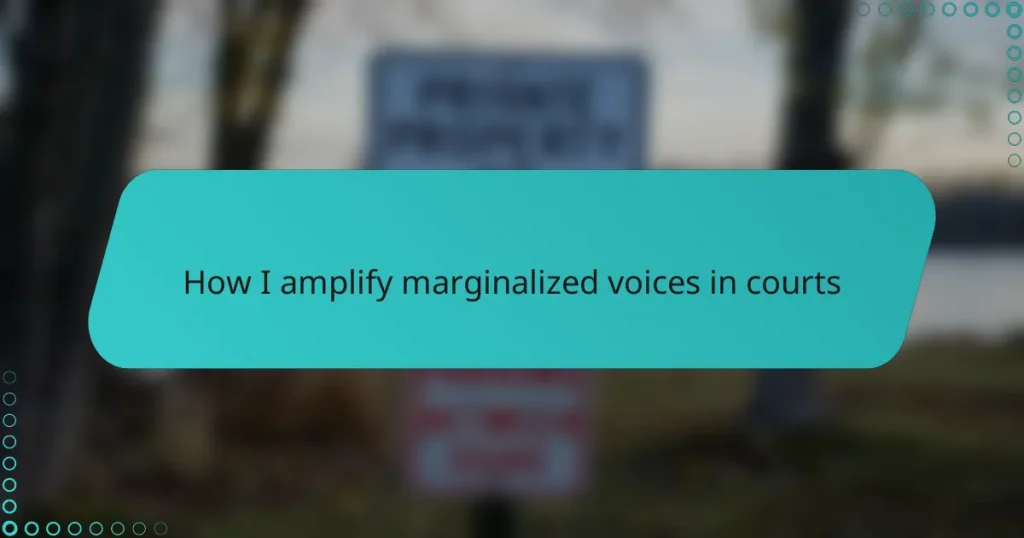Key takeaways
- Legal advocacy requires a blend of legal knowledge, empathy, and effective communication to uplift marginalized voices in the courtroom.
- Building trust with clients is crucial; it involves consistent communication and acknowledging their unique struggles beyond legal issues.
- Effective representation involves tailoring strategies to clients’ needs, using narratives to humanize their stories, and collaborating with community advocates.
- Advocates must prepare clients for courtroom dynamics to empower them, enhancing their participation and making their voices heard.
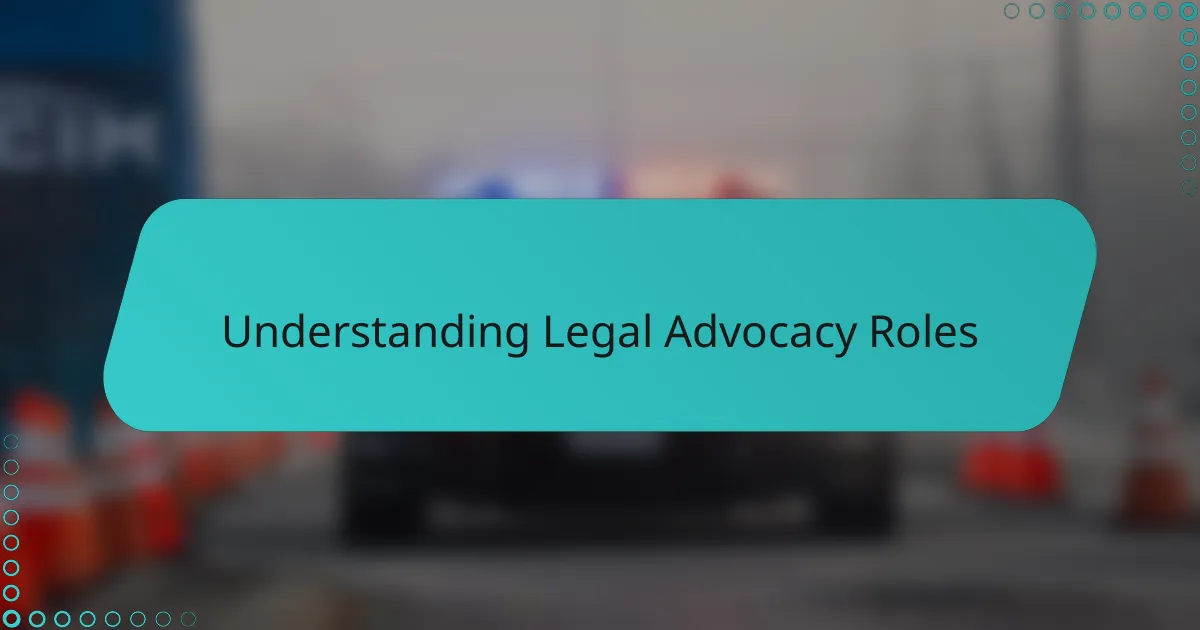
Understanding legal advocacy roles
Legal advocacy is more than just knowing the law; it’s about being a voice for those who might otherwise go unheard. I’ve found that truly understanding this role means recognizing the power dynamics in the courtroom and using legal tools to shift them in favor of marginalized individuals. Have you ever felt compelled to stand up for someone when the system seemed stacked against them? That’s the heart of legal advocacy.
When I first stepped into this role, I realized it required not only legal knowledge but deep empathy and a commitment to justice. Advocates don’t just present facts; we bring the lived experiences of clients to the forefront, making their stories impossible to ignore. This personal connection fuels the passion needed to navigate complex legal channels effectively.
It’s fascinating how legal advocacy combines strategy with compassion. I often ask myself, how can I translate rigid legal language into compelling narratives that resonate with judges and juries? This balance is what defines the work—ensuring that marginalized voices are not just heard but amplified in courts where every word holds weight.
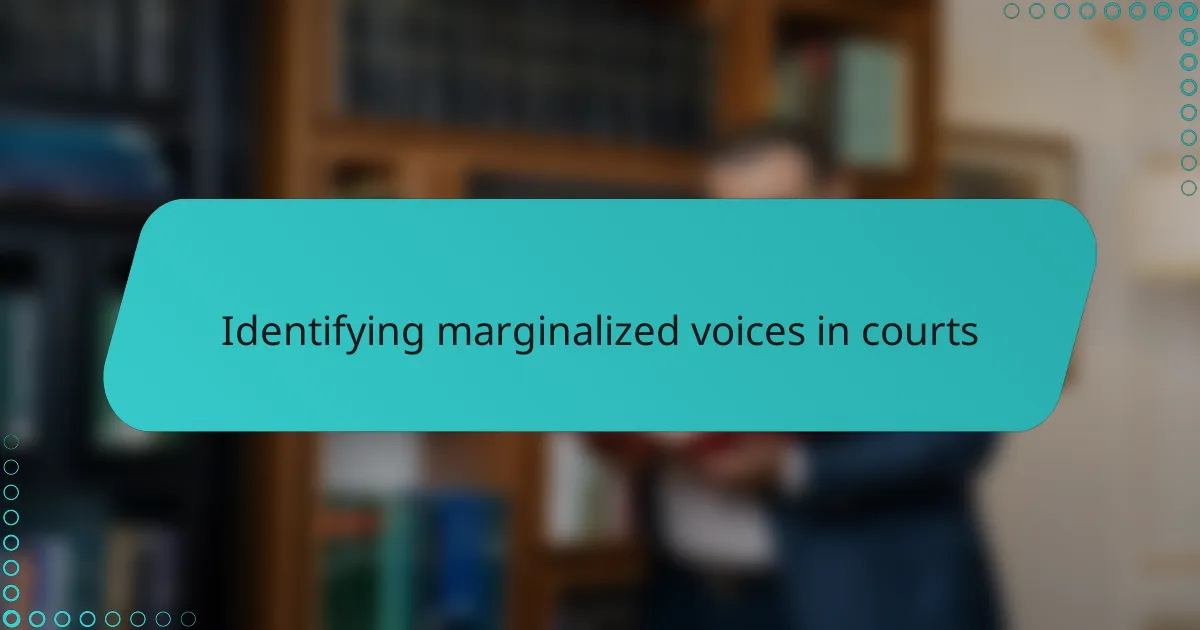
Identifying marginalized voices in courts
Spotting marginalized voices in court isn’t always straightforward. I’ve noticed that these voices often come from people facing systemic barriers—whether due to race, class, disability, or language—and their stories might get lost under formal procedures or legal jargon. Have you ever seen someone struggle to speak up because the setting feels intimidating or unfamiliar? That’s a crucial moment where identification matters most.
Sometimes, I’ve found that the clues lie in what’s not said—the silences, hesitations, or lack of representation. It makes me wonder: how many important perspectives slip through the cracks just because they don’t fit the courtroom’s typical narrative? Recognizing those gaps means listening beyond words and paying attention to what the environment might be suppressing.
In my experience, building trust with clients early on helps reveal these marginalized voices. When people feel safe to share, they bring out aspects of their stories that might otherwise remain invisible in court. It reminds me that identifying marginalized voices is as much about human connection as it is about legal acumen.
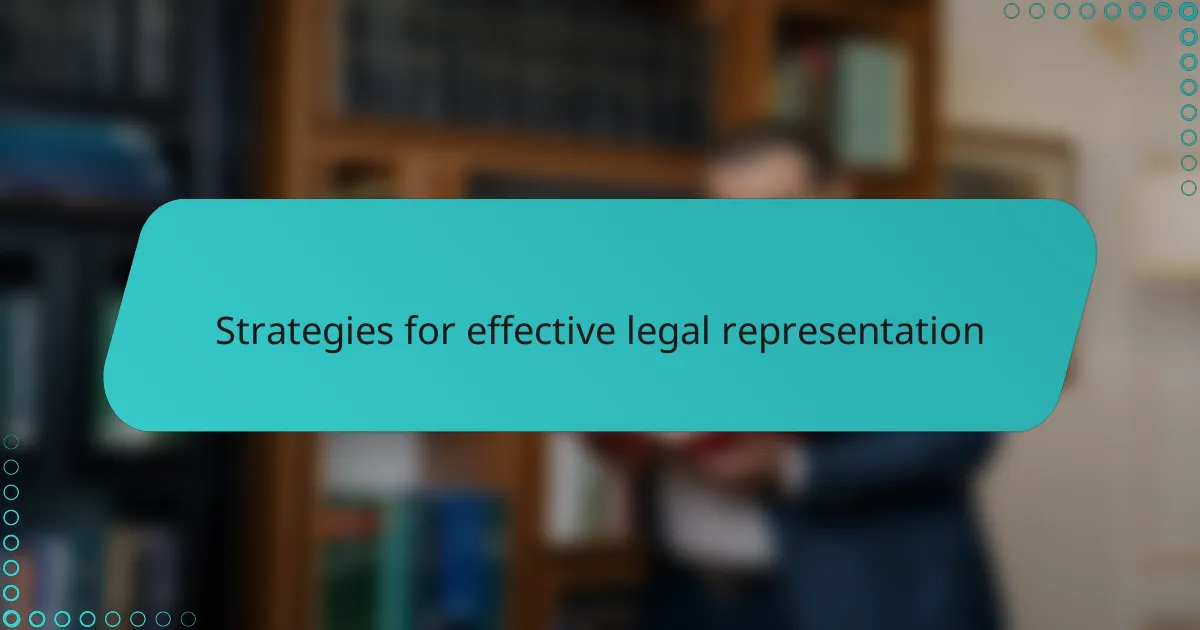
Strategies for effective legal representation
When I think about strategies for effective legal representation, one key approach is tailoring communication to meet clients where they are. Have you ever noticed how legal jargon can create an invisible barrier? I make it a point to break down complex terms into everyday language so clients feel empowered, not overwhelmed. This simple shift transforms our interaction and strengthens their confidence in the process.
Another strategy I rely on is thorough preparation that goes beyond documents and statutes. I dig deep into clients’ contexts—their communities, challenges, and cultural backgrounds. This effort often uncovers nuances that might otherwise be overlooked in court. When I bring these insights forward, it humanizes clients in a way legal briefs alone cannot, creating a more compelling case.
I also believe in building alliances with community advocates and support networks as part of representation. Why face the courtroom battle alone when others can amplify your voice? Involving trusted community figures has often opened doors, offering emotional backing and practical resources that enrich our legal arguments. This holistic approach turns representation into a shared fight for justice.
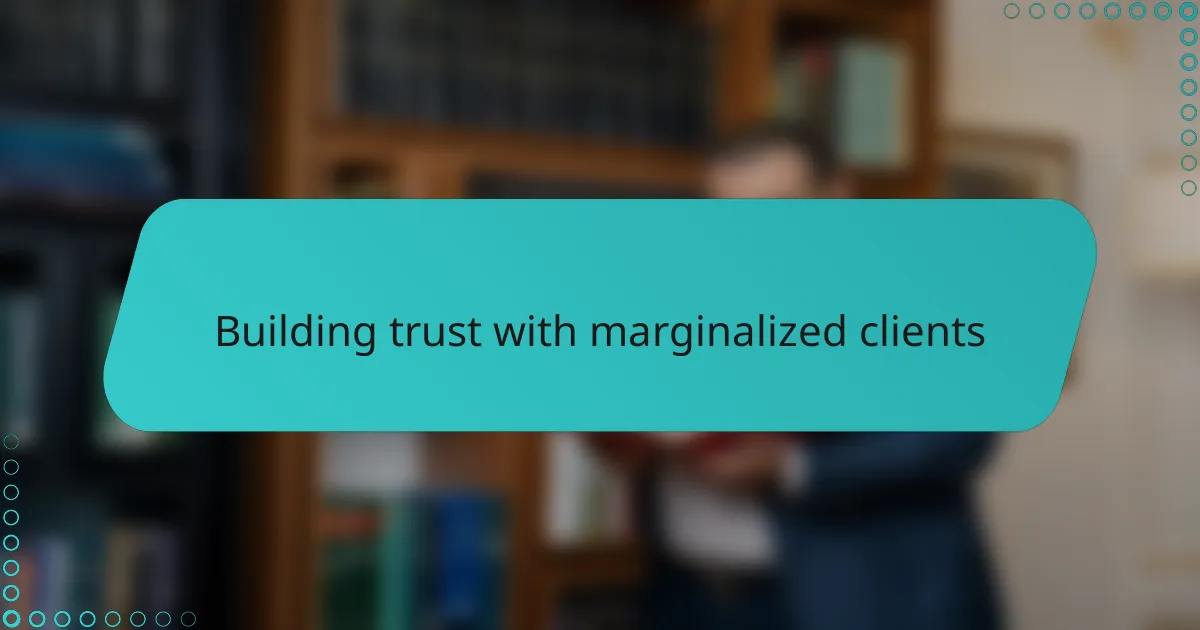
Building trust with marginalized clients
Trust doesn’t come easily for many marginalized clients, especially when past experiences have taught them that the legal system can be cold or even hostile. I remember working with a client who initially kept information to herself, fearful of judgment or dismissal. It made me realize how essential it is to create a space where they feel genuinely heard and respected before any legal strategy is discussed.
I always ask myself, how do I bridge the gap between skepticism and partnership? For me, it starts with consistent, honest communication—showing up on time, following through on promises, and listening without interrupting. These simple actions build a foundation that sometimes feels fragile but is incredibly powerful in earning trust over time.
What really solidifies trust is acknowledging the unique struggles each client faces beyond their legal issues. When I share that I see them as whole people, not just cases, we build a bond that encourages openness and collaboration. This connection transforms the representation from a transactional role into a shared journey toward justice.
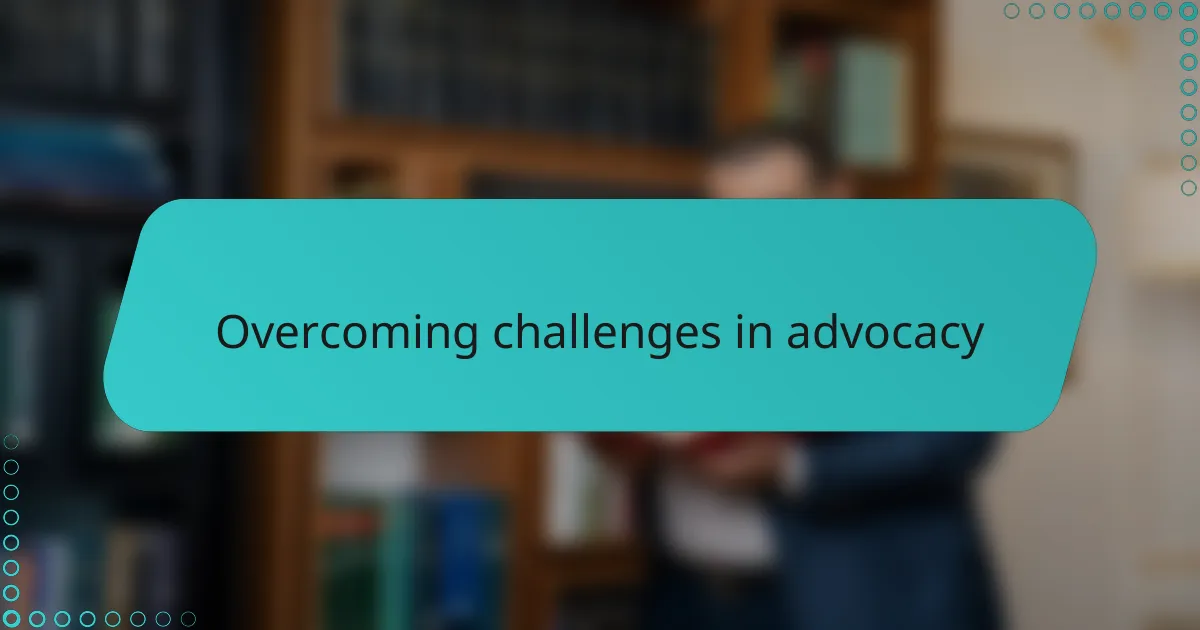
Overcoming challenges in advocacy
Challenges in advocacy often show up unexpectedly, and I’ve learned that resilience is key. Have you ever felt the frustration of hitting a wall when trying to make your client’s voice heard? Those moments test not just legal skills but also patience and creativity in finding new pathways forward.
One difficulty I frequently encounter is overcoming the skepticism courts sometimes have toward marginalized clients. It’s tough watching a judge’s doubts shadow a case, but I remind myself that persistence and thorough evidence can chip away at bias. By consistently reinforcing our arguments with both legal merit and human stories, I’ve seen barriers begin to give way.
Another challenge is managing the emotional toll this work takes. Advocating for people who face deep systemic injustice can be overwhelming, but I’ve found that leaning on a supportive network of colleagues and grounding myself in the purpose behind the work makes all the difference. How do you stay strong when the road feels long? For me, it’s remembering every small victory builds toward greater change.
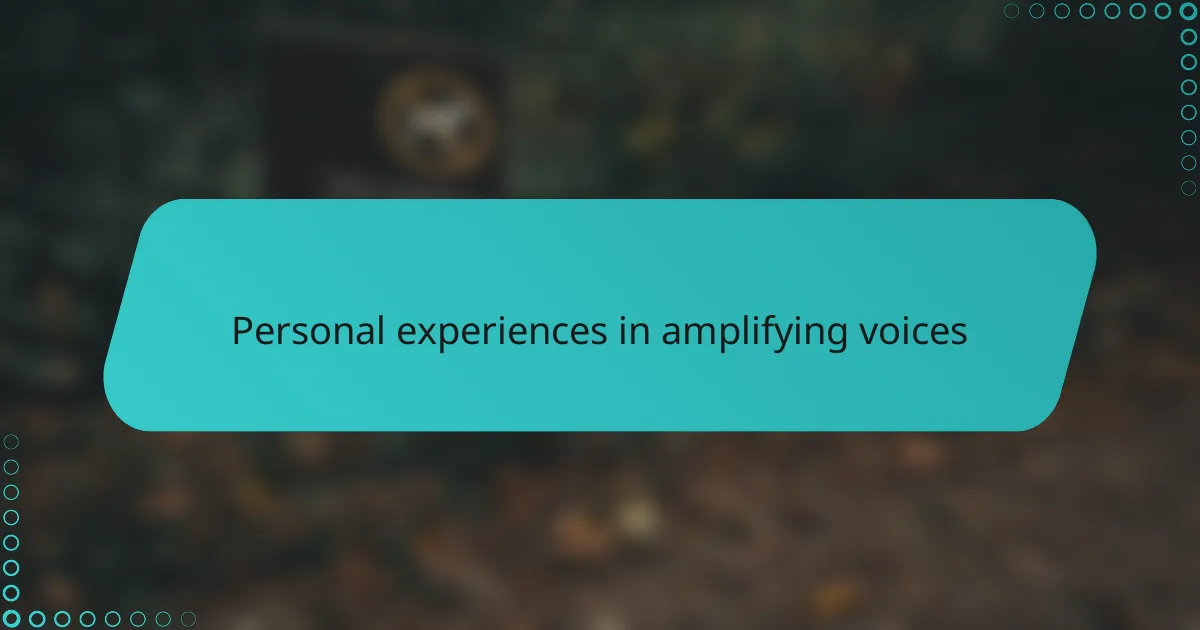
Personal experiences in amplifying voices
I recall one case where a young client’s voice was nearly drowned out by formal courtroom procedures. It struck me how vital it was to step in and speak not just for their legal rights but for their very humanity. Have you ever witnessed someone’s story come alive when given the space to be truly heard? That moment reaffirmed why I do this work.
There have been times when I’ve sat in courtrooms feeling the weight of silence heavier than any spoken argument. I ask myself, how can I break through that quiet and let the client’s truth shine? It’s those fragile intersections of vulnerability and advocacy where I find my purpose deepening.
Sometimes, amplifying voices means more than speaking louder—it means crafting narratives that bring lived experiences into focus. I remember preparing a statement that wove in a client’s personal hardships alongside legal facts, and seeing a judge respond not just intellectually but with real empathy. Moments like that remind me that storytelling is a powerful form of justice.
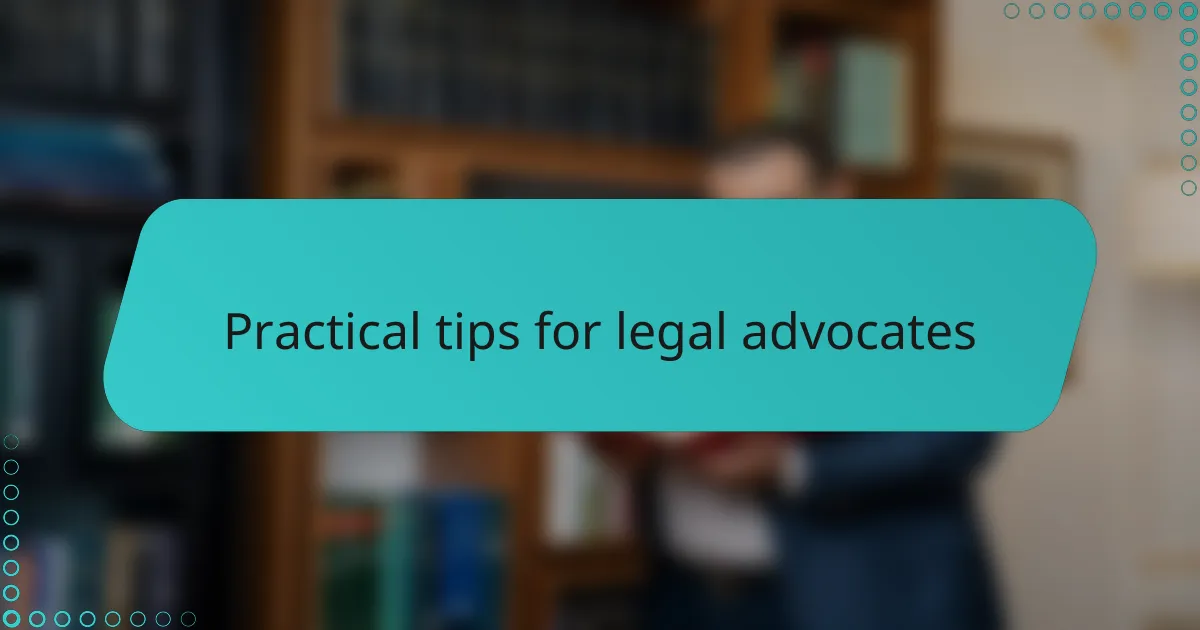
Practical tips for legal advocates
One practical tip I’ve found invaluable is to always center the client’s voice throughout every step of the process. Have you ever noticed how easy it is for well-meaning advocates to unintentionally overshadow their clients? I remind myself to ask open-ended questions and listen more than I speak—it’s surprising how this simple shift uncovers insights that strengthen the case.
Another strategy that’s worked well for me is preparing clients for courtroom dynamics before they even step inside. The courtroom can be intimidating, so I run through what to expect and discuss how to assert themselves respectfully but firmly. This preparation not only reduces anxiety but also empowers clients to participate actively, making their presence felt rather than overlooked.
Lastly, collaboration with multidisciplinary teams is something I consistently lean on. Whether it’s social workers, interpreters, or community leaders, bringing in diverse perspectives ensures the client’s story is fully represented. Have you experienced how relying on a network can transform a case from a solo fight into a collective effort for justice? It’s an approach that constantly reminds me advocacy is about connection, not just legal knowledge.
